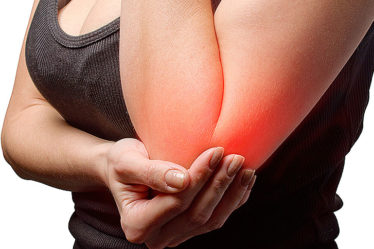
Football is the world’s most popular sport, but the injuries are just as painful, if not more dangerous. If you’re an avid player of football, then you might need to keep these injuries in mind, because you never know when and how you can fall victim to one of them. This will help you know which injuries can be treated by rest and physical therapy and which ones need the attention of an orthopedic surgeon.
Muscle Strains
Also known as muscle pulls or torn muscles, muscle strains are the pulling of the muscle beyond the tension and it can cause a lot of pain and stiffness. The symptoms include:
- Inability to walk until the muscle regains its flexibility
- Pain during walking, especially if the muscle is still stiff
- No flexibility in the leg
Muscle strains are one of the most easily healed injuries and there’s no need for treatment. If you get a muscle pull on the spot, then you can massage the area, until the tension is released from the muscle and you’ll be able to walk properly again.
Knee Injury
Knee ligament injuries are probably the most commonly heard injuries in football. Since your foot is engaged at all times, injuries to the bone and ligament are going to become inevitable. Some of the most common knee injuries are:
- ACL injury that inhibits forward movement of the leg as well as rotation
- PCL injury that affects the shin and the center of the knee
- MCL injury seriously affects the inside of the knee and inhibits stability
- LCL injury can damage the outer knee and the leg
Shin Splints
Shin splints are also called tibial stress syndrome. The main part of the leg that’s affected is the front of the lower leg, aka the tibia. The lower part of your leg is essential in movement, sprinting, and taking steps, in general, so you can only imagine how serious this injury is. The symptoms of shin splints are as follows:
- Pain in the leg that is felt down to your toes
- Pain in the base of the foot
- Stiffness in the leg
Even though it’s serious, tibial stress syndrome can be treated non-surgically very easily, with rest, physical therapy, following a good diet, and supplementing your mineral needs.
Hamstring Strains
Kicking engages the upper thigh and your buttock muscles in football and the part that’s affected the most in this action are the hamstrings. Hamstrings are muscles that connect your buttocks to the back of your knees. Hamstring strains include the following symptoms:
- You will feel stiffness and pain in your upper thighs
- Sitting down for too long will be uncomfortable
- Running can intensify the pain
Hamstring strains can be easily treated with a good massage and rest. The strain will go away once the tension is released from the thighs, so stretching and yoga help.
Concussion
More often than not, head injuries in football can be very serious. Since it’s a hands-on sport there’s a lot of tackling, kicking, and pushing. If you hit your head when falling, then you can get a concussion. These are the main symptoms of a concussion:
- Your head will hurt a lot
- You will lose focus and concentration
- Chronic pain in the head becomes the norm
To get your head in the game you’ll need to set sports aside for a bit and let your head heal completely, to prevent further damage to the skull.
Jumper’s Knee
Jumper’s knee is also known as patellar tendinitis and it’s the injury of the tendon that attaches the kneecap to the lower leg or shin bone. The result can be excruciating pain in the lower leg that can radiate up to the knees and it can be really hard to play football. Symptoms can include:
- Pain in the leg
- Inability to bend the knee
- Overall difficulty in standing up
If you want to treat this injury and get back on your feet, literally, then you need to take pain medicine, proper rest, and a bit of light stretching to heal the tendon and keep it moving at the same time, so that your foot doesn’t lose flexibility. Going to a knee injury doctor Woodbridge is important for proper treatment.
Metatarsal Stress Fractures
Metatarsals are the bony junctions that connect the leg to the toes and these are what give your foot that arch. Metatarsals distribute the weight of your body as you’re walking and they’re also essential for taking steps. Now, since these bones are small and thin, hairline fractures are common. This can lead to you:
- Not walking properly
- Feeling pain when curling the toes
Luckily, these fractures can be easily fused in time, if you don’t put too much stress on your leg, so keeping the foot immobile is the way to healing.
Rotator Cuff Strain
Shoulder injuries also occur quite frequently in football players. The rotator cuff is the ball-like joint of the shoulder that allows the rotation of the arm as well as the shrugging action of the shoulders.
The rotator cuff is a complex joint of four bones and an injury to this vital part can lead to a lot of problems. The cuff can snap out of place, there might be a fracture or complete immobility of the shoulder can cause a frozen arm. So, as soon as you feel slight pain in the shoulders, it’s time to give yourself a much-needed break.
Ankle Sprain
Ankle sprains can be 50-50 in management. Sometimes, they’re very mild, and other times, they can lead to complete immobility and, worse, fractures if you’re not too careful. Ankle sprains happen when the muscle of the ankle is pulled beyond its limit and it can cause:
- Pinching pain in the foot
- Discomfort when you walk
Mild sprains can be treated easily with a hot and cold compress and resting the foot for some weeks, but if you’re putting too much stress on the injured ankle, then you’re also ruining the chances of your ankle healing completely.
Achilles Tendinitis
Achilles tendinitis is the occurrence of chronic or acute pain behind the ankle. The ankle is the place where the highly vital Achilles tendon is present and it’s responsible for making the leg able to walk and take steps. Sometimes, especially in rigorous foot sports, like football, the tendon can get ruptured or pulled and it can cause a lot of pain.
Now, from this point forward, the way you take care of the injury will determine whether the pain will subside over time and you’re completely healed, or that you’re putting your foot under more stress, by straining it and forcing yourself to play again. Symptoms can include:
- Inability to walk
- Pain when putting pressure on the knee
- Swelling or deformation, if a bone injury is involved as well
The best way to treat this injury is to give your foot a rest, alternate between hot and cold compress, and take pain medicine for managing the pain.
Conclusion
Football injuries are healed with proper rest and pain management and now that you know all of the football injuries under the sun, and their respective treatments, you can go back to kicking the ball in the net and scoring a goal. Make sure to consult a sports medicine specialist Woodbridge for treating and preventing injuries.


